Teach you how to set your Facebook ad budget correctly
Want to know how Facebook ads spend their money properly? How do I set a budget?
Status quo: It's normal for marketers to set an expected figure for ad performance, but many people skip this step and think: I need a $1,000 advertising budget this month. Try the strategy as long as the heart is doing is also undeniable. But most of the time, advertising operators do things that deviate from their goals, pay too much attention to the number of interactions, I have a few people like today, who will comment tomorrow,Ignoring what the purpose of advertising is: to earn revenue.
Then I'll talk today.
#1: Set sales goals
A better strategy should think this way:
"How much Facebook ad budget do we need to earn $X?" By setting revenue goals, then analyzing the key metrics you need to achieve them, and finally optimizing your ad planning process around goals, you can also help you focus more on the input-output ratio.
Let's say you're using Facebook ads to get leads to potential customers, targeting $10,000 a month in revenue. Assuming your product/service profit is approximately $1,000, you will need 10 sales per month to achieve this goal. In addition, it takes an average of 25 prospects to create a deal based on experience, and 250 customer leads to meet this revenue target. To put it another way, each lead is worth about $40 ($1,000 profit/25 leads).
#2: Create a custom conversion path in Ads manager
After you've set your goals, how do I do it?
First of allInstall and configure the Facebook Pixelto track conversions and optimization. Once the Pixel is installed, you'll need to create a custom conversion.
Suppose you want to set up a custom conversion event to measure the download of your company's product book. Open Facebook Ads Manager, click on the three bars in the upper left corner, and then select Custom Conversion.
Click to create a custom conversion. In the pop-up window, enter a thank-you page link (on behalf of the user that the user has downloaded and viewed it), select the boot category, and then click Next.
Enter the conversion name and click Create. When users see the thank-you page any time they fill out a form and submit it, it inspires the event, and Facebook records the conversion.
When you create a Facebook ad, choose conversion as your ad goal, and then select this custom conversion as your conversion event.
So far, we've all been doing one thing, in order to get accurate and purposeful advertising spending in the process of collecting potential customers.
#3: Create two campaigns
There's a CPA computing problem here, which is how much it takes to get a lead, which is actually very much about the audience you choose, the creatives, and the sales funnel strategy.
I talked about how to prepare for Facebook's marketing journey, so I don't recommend directing the flow to the product manual download page, preheating this traffic first, and making the whole process of getting a potential customer's email address seem reasonable and natural. You can do this in two steps:
- Attract potential readers with high-quality blog posts.
- Redirect these blog readers with your electronic profile to lur them to the landing page.
You should be aware that the two ad images and photo can be different, but you need to mention the same theme, which can significantly reduce CPA costs.
#4: Monitor results and adjust your campaigns
After running your ads for a while, you'll need to collect conversion data, see charges on Ads Manager, and configure columns to see data about custom conversions. Click the column button on the right, and then select custom columns from the drop-down menu.
In the middle pane of the Custom Columns window, check the options that need to be displayed in the figure below, and the right-hand box section is the one that has been selected.
When you're done, select Save as preset in the lower left corner, and then click Apple in the lower right corner.
If you add Book Download and Cost per Book Download to the display column (as shown in the figure above), you get the number of leads and the cost of getting one. Let's say you see the following results, showing that your CPA is $5.10: $250 spent / 49 leads . . . $5.10 cost per lead
We now need to re-evaluate our sales target, which is to generate 250 leads (10 sales) per month. Based on these results, your Facebook ad budget will need about $1,275 to do just that.
Optimize your Facebook campaigns
Now that you've designed your Facebook ad budget based on your sales goals, there are a few ways to improve your ad performance:
Filter out the best performing audience targets. For example, if people who are interested in "skin whitening" are much cheaper than those who are interested in "skin whitening", shift your budget to a "skin whitening" audience to get more potential customers at the same cost.
Create a similar audience based on the list of leads. Facebook uses its own data and algorithms to help you find groups similar to existing potential customers. Isn't it Amazoning? Of course, before you can create a similar audience, you need to create a Custom Audience that completes this custom conversion event.
Once you've created your Custom Audience, click Create Audience to select Lookalike Audience from the drop-down menu, as shown below.
Then just select the converted audience as the source. Adjust the other options and click Create Audience. You're done creating a similar audience.
Conclusion.
Another benefit of building Facebook's advertising budget in this way is that it creates a virtuous circle of measurement and optimization - did you try $0.29 this month when you were $0.30 last month? Once the break-even point is reached, you can see if there is an opportunity to reduce CPA and improve margins.
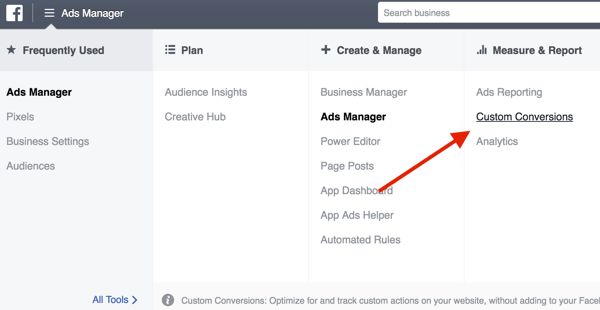
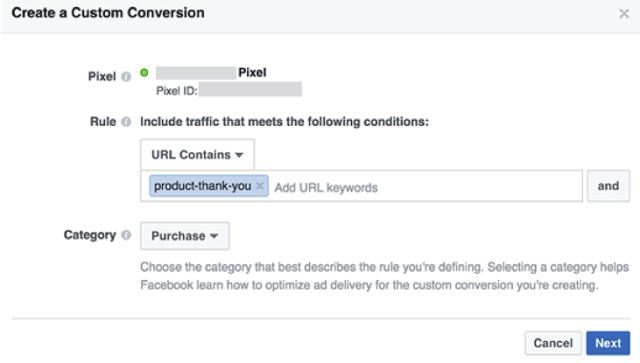
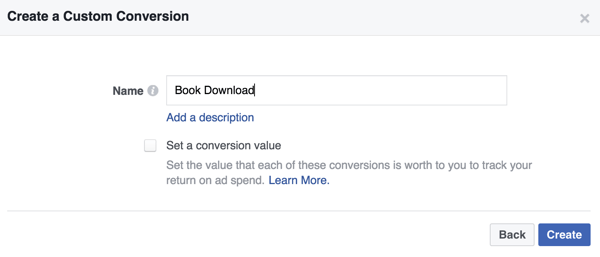
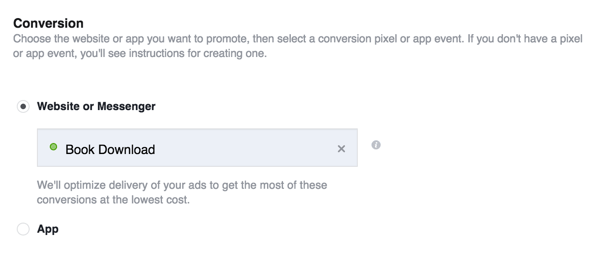
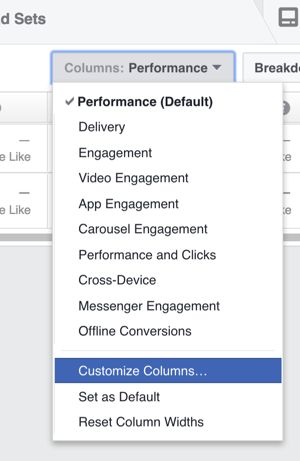
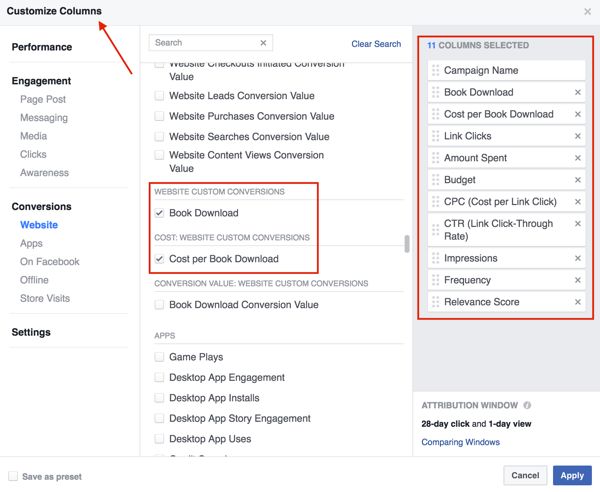
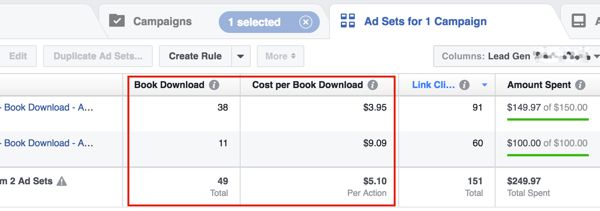
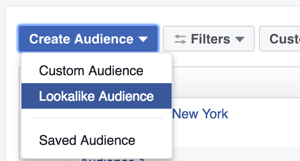
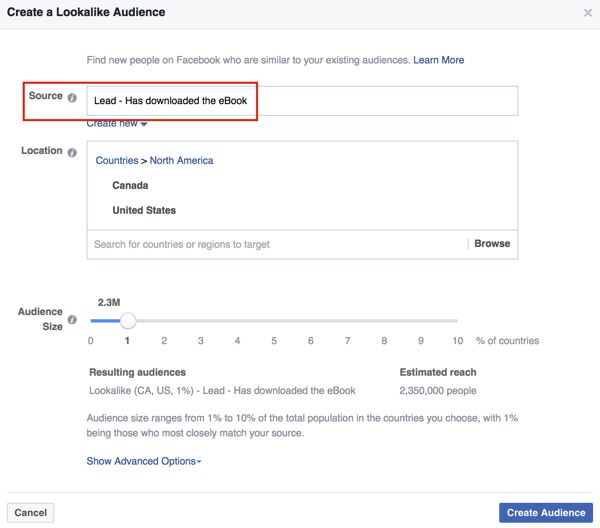
Go to "Discovery" - "Take a look" browse "Friends are watching"